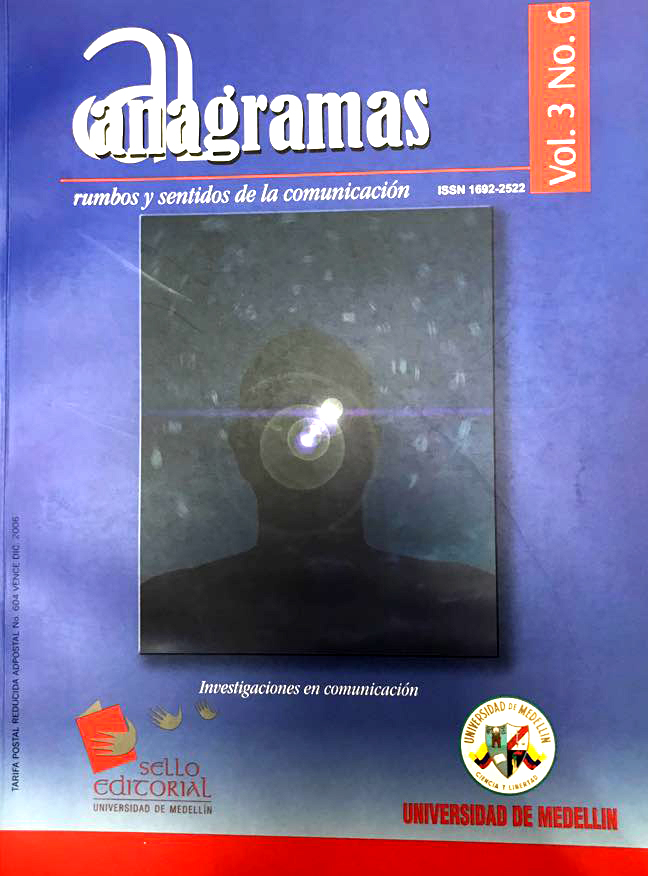JÓVENES, CULTURA ESCRITA Y TECNOCULTURA. Análisis de los resultados arrojados por la encuesta en una investigación sobre lectura, escritura, conocimiento y tecnocultura en la universidad
Main Article Content
Abstract
Parting from a conceptualization of what the written culture means and its importance over the educational
systems during the Western Modernity, this article develops a hypothesis around the crisis of the written
culture in our surroundings; and it brings forth empirical evidences provided by a survey on the 259
students who had participated in the research over 'Writing, knowledge, and techno-culture on campus.'
The methodology includes a reading test and a writing test, the results of which were disclosed in another
article. This one, on the other hand, analyses the survey that asked about the students’ socio-economical
class, their reading and writing practices before and after being admitted to the university. It furthermore
inquired about the academic and extra-curricular spaces such practices provided; about the kinds of
sociability that favored their relationship with the written culture through reading and writing; it verified
the educational level of their parents, the usage of audiovisual means and new communication and
information technologies (PC and internet), their interactions with them, and their ways of acquiring those
knowledges that derive from their relationship with written texts, the media, and technologies. Considering
writing as a technology, this text shows its articulations with the others in the current historical conditions
of college education in our country.
The analysis shows the contrast between the crisis of a written culture, historically precarious in the
Colombian education, and the rising of the contemporaneous techno-culture, as a result of a cultural
transformation from which many of the reading and writing problems on behalf of the students are derived,
problems the diagnosis and solutions of which transcend the boundaries of disciplinary researches, be
they linguistical, semiotic, or literary.
systems during the Western Modernity, this article develops a hypothesis around the crisis of the written
culture in our surroundings; and it brings forth empirical evidences provided by a survey on the 259
students who had participated in the research over 'Writing, knowledge, and techno-culture on campus.'
The methodology includes a reading test and a writing test, the results of which were disclosed in another
article. This one, on the other hand, analyses the survey that asked about the students’ socio-economical
class, their reading and writing practices before and after being admitted to the university. It furthermore
inquired about the academic and extra-curricular spaces such practices provided; about the kinds of
sociability that favored their relationship with the written culture through reading and writing; it verified
the educational level of their parents, the usage of audiovisual means and new communication and
information technologies (PC and internet), their interactions with them, and their ways of acquiring those
knowledges that derive from their relationship with written texts, the media, and technologies. Considering
writing as a technology, this text shows its articulations with the others in the current historical conditions
of college education in our country.
The analysis shows the contrast between the crisis of a written culture, historically precarious in the
Colombian education, and the rising of the contemporaneous techno-culture, as a result of a cultural
transformation from which many of the reading and writing problems on behalf of the students are derived,
problems the diagnosis and solutions of which transcend the boundaries of disciplinary researches, be
they linguistical, semiotic, or literary.
Keywords:
How to Cite
Carvajal Barrios, G. (2015). JÓVENES, CULTURA ESCRITA Y TECNOCULTURA. Análisis de los resultados arrojados por la encuesta en una investigación sobre lectura, escritura, conocimiento y tecnocultura en la universidad. Anagramas Rumbos Y Sentidos De La Comunicación, 3(6), 15–70. Retrieved from https://revistas.udem.edu.co/index.php/anagramas/article/view/1093

